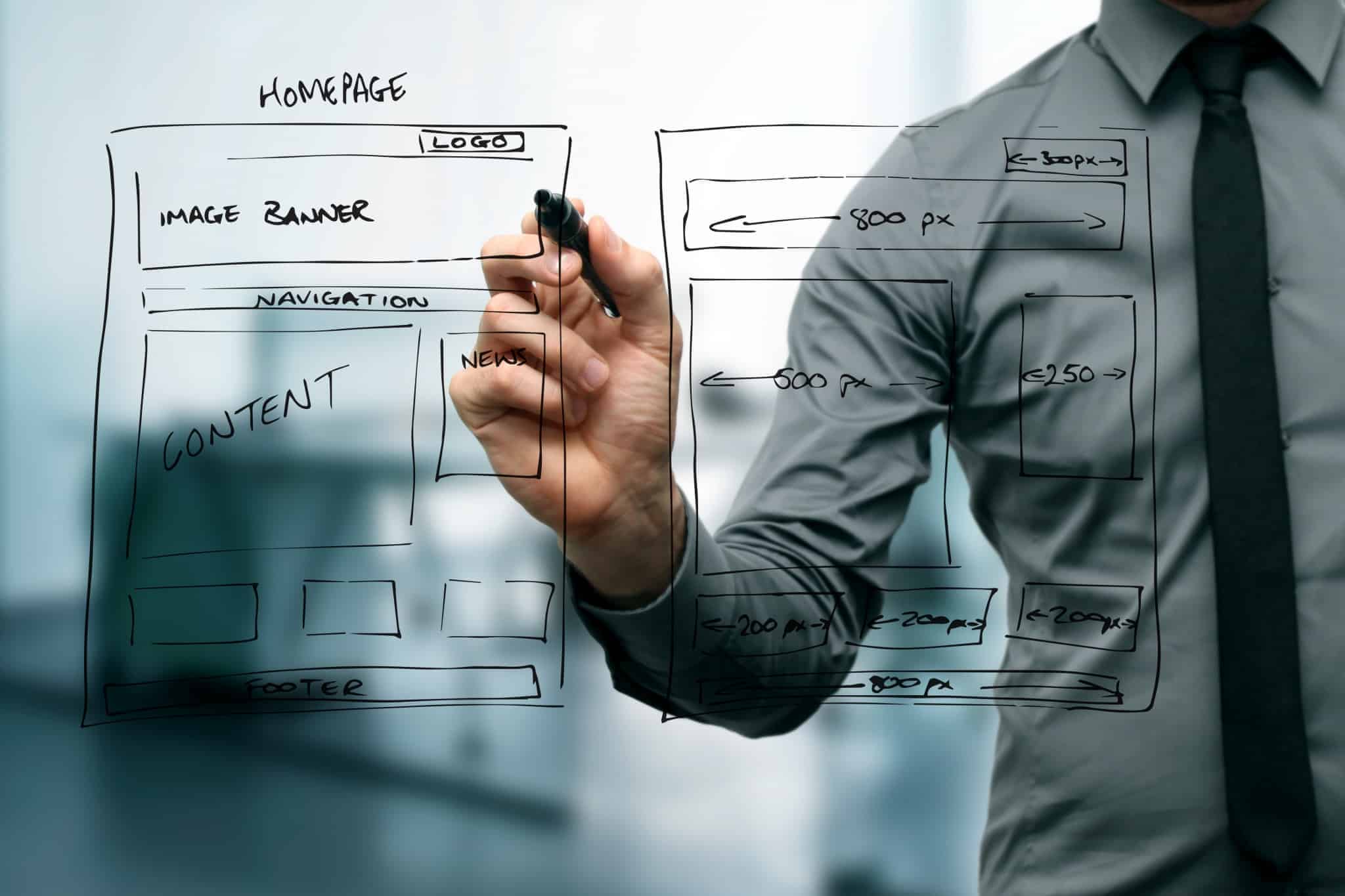
What Business Owners Need to Know About Great Web Design
Most business owners in today’s ‘digital first world’ understand the value of having an online presence. The internet provides numerous powerful channels through which businesses can reach out to their target audiences and turn visitors into regular and loyal customers.
Having an online presence starts with having a fantastic, user-focused, and professional website. Like all business assets, you obviously want your website to provide you with a good ROI (return on investment), considering the time and financial investment that you devote into maintaining it and the cost of setting it up, hosting it and so on. Your website also acts as your Digital Identity, telling the world what your brand is all about and what your USP’s (unique selling points) are.
While there obviously are many marketing channels that you can tap into in order to drive people to your website, once they get there, they actually have to convert – into a paying customer, for example. A conversion can be anything ranging from form filling to downloading a piece of content, making an online purchase and so many more.
When agencies typically start talking about converting the users that land on your web pages, you know a big pitch about CRO (Conversion Rate Optimisation) is typically on the horizon. However, that’s not what we are going to be discussing here.
Instead, we’re simply going to talk about some basic principles of web design that can help your website to be as user-friendly as possible from the outset – Think of these as ‘ground rules’. This will help to provide a solid design-led base for your business to operate from. Even if you only conduct the following steps, you can be sure you at least have the basics covered.
Why does my site need to be user-friendly?
In simple terms, if something is challenging to use, people will turn away from it and find something easier to use. In website terms, if a specific piece of information is too hard to find for instance, users will search for it elsewhere.
In today’s digital age, consumers understand that information is available immediately and as such web users have developed low tolerance for this kind of thing; it doesn’t take them long to get fed up and visit another page… And the chances are, regardless of what industry you operate within, you will have strong competitors in the online world, hence you just can’t afford to lose potential customers because of basic design and usability issues on your site.
Fundamentally, your website needs to be as easy and natural as possible for your potential customers to engage in, because providing a good user experience for them means they are more likely to stay on your site and convert into paying customers. Understanding that the main priority for your website has to be user experience is a fundamental component of a great Website Design!
Web design and usability
Although the design of your website is not the only factor that determines a user’s experience, it has a high degree of control over several usability factors. Hence, here’s a breakdown of what business owners need to be familiar with about web design, to make sure their website is not underperforming.
Navigation:
if you harbor worries that the design on your site might not be the best that it can possibly be, the first thing you should look out for is simple navigation.
This comprises of the menu navigation that your site is expected to have at the top of every page, as well as related links or sidebars that may be present and internal links in the body copy. Your major navigation menu should highlight only the most important pages on your sites; placing too many items in the menu can make it look disorganized, confusing users and making it harder for them to find what they want. Stick to including your product or service landing pages (yet again, only the most important ones if you have many), informational content pages such as ‘About Us’, and links to subsections of the site like your blog.
If you have more comprehensive content pages that aren’t fit to be included in the site’s main navigation menu, then that is where sidebars, related links and internal body links can come in handy. You could use a sidebar to create a subordinate navigation menu once the user is within a certain sub-section of your site, or use related links at the bottom of the page to direct the user to other pages that you would like them to see.
Getting the correct blend of pages in your main navigation menu and pages linked elsewhere on your site helps to make sure that your navigation menu does not get too cluttered, but allows users to wriggle their way through all the different levels and pages of your site at the same time.
Layout:
Another important factor that has a massive impact on user experience is the layout. In fact, you could make a case for it being one of the most important factors in rating user experience.
The first thing to have in mind is that your page should not be too busy or cluttered. Each individual element on the page should have enough space and padding around it to let it ‘breathe’. This aids the user not only to understand what is really on the page, but also to more swiftly locate the page elements and content most relevant to them.
If you are using sidebars or multi-column page layouts, then you need to be especially careful here. You don’t want to keep your user in a state of uncertainty; being unsure of where to look or where to start from when they land on your page, and sometimes having too many items all in one space can cause confusion.
Tip: Having someone you know who isn’t overly familiar with your site to take a glance could prove to be a masterstroke. You can then ask them where they looked first, whether it was clear enough which elements on the page they should be paying attention to, and if they easily located the content and information they sought.
Colours:
The colour you choose to use on your site can significantly affect the time spent by a user there. Many businesses base their website’s overall colour scheme on their logo or brand colours; this however is not always the best idea.
The identity of a brand exists to fully express the heart, soul and personality of the business, but this shouldn’t dominate the end-to-end on-site experience. It may happen that your brand identity features a lot of bright enthusiastic colours which look wonderful in your logo and other branded marketing materials. The same vibrant colour scheme however may not be appreciated when used as a text link or background colour, or indeed in all of your site’s imagery.
As pointed out, it doesn’t take much to put a user off and make them visit elsewhere – hence it’s vital to strike the right blend between letting your brand identity have a presence in your site’s design, whilst also preventing it from being excessively unpleasant or difficult to navigate.
Content:
It is of utmost importance to keep your page content in mind when choosing and modifying your site’s design. The most important thing on your website is content – think about it; it is where ecommerce businesses highlight all the products they sell, it is where service-based businesses get the opportunity to show off their USPs, and it is where you provide your contact details and encourage users to get in contact.
Therefore, you should always make sure that your site’s design is crafted around the content on your site, instead of reshaping your content to fit in with a design. This doesn’t have to limit your site’s creativity!
Device type:
With more than 50% of worldwide internet traffic going through a mobile device, it goes without saying that your site’s design needs to leave room for flexibility to cover a wide range of different types of devices. If a mobile-phone user visits your site and has to zoom in or out in order to access content or read properly, chances are they’re not going to stay around for long. As well as having a responsive mobile-friendly layout, there are also a lot of other design considerations that should be made for non-desktop users, like text size, image resizing, button size, as well as your menu’s layout. Keep in mind that tapping with your finger on a mobile device is quite different to clicking with a mouse – and your site’s design will need to cover that.
There are numerous other aspects of web design that could be discussed here, but for busy business owners, it becomes compulsory to prioritize the most significant. Exactly which elements of web design are the most important in maximizing usability and return on investment are, of course, up for debate, but the ones that have been discussed here are definitely the most important regardless of which angle you look at it from. If you’re interested in learning more about web design, get in touch with one of our friendly web design team.

